Baby Weaning Recipes for 6 Months Old

Weaning is one of the natural phases of your baby’s growth and development. It is the progressive introduction of other meals to your baby while you continue to breastfeed them. Weaning can bring up a lot of mixed and overwhelmed feelings.
You may be both happy and sad about your baby’s newfound independence and the fact that he/she is moving on to a new stage in her life. This is very normal behavior. But you got to start someday. So, why not do it happily and in proper ways.
There are several weaning recipes for 6 months old baby that you can start with. However, every baby has his/her timeframe. There might be a possibility that your baby will not like your weaning recipes in the starting. We just want all the mothers to know that IT IS OKAY. It is okay if your baby weaning recipes do not start working right away. It is going to take some time but will happen eventually.
But why are we saying you to keep trying? Why do you think weaning is required for your baby? Keep reading to know more about the importance of weaning, when and how to start weaning, and a lot of recipes for babies that you might want to try when you start weaning your baby.
Why is Weaning important?
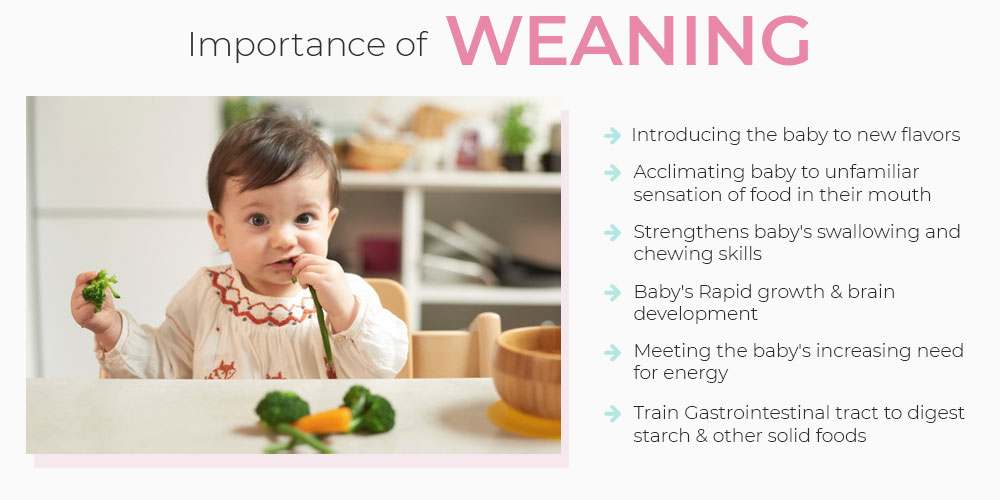
Weaning is a fun and important phase of your child’s growth. They’ll start to require more than milk to fulfill their hunger and meet their nutritional demands around the age of six months. This is where several exciting weaning recipes for 6 months old baby come into play and do wonders.
It’s not just about filling them fully when it comes to weaning. When you expose your infant to a range of different weaning recipes and tastes, they are more likely to accept new flavors in the future.
Weaning focuses on acclimating your kid to the unfamiliar sensation of food in their mouth. When your baby experiences eating from a spoon along with getting introduced to various baby weaning recipes and textures, it strengthens their swallowing and chewing skills over the following few months, allowing them to gradually handle lumpier foods.
Is my baby ready to wean?
It’s time to start when your kid shows a couple of these indications – generally around 6 months old but no earlier than 17 weeks:
- Your baby sits up and holds their head steady.
- Your baby constantly picks up different stuff and tries to put it in their mouth.
- Your baby readily swallows food if offered.
Weaning should begin at 6 months, according to the Department of Health. However, all babies develop at various rates, and some are ready to begin a bit earlier than others. If your baby exhibits all of the above symptoms before reaching the age of six months, it’s advisable to seek assistance from your health visitor.
How to Start Weaning a Baby
The first time you offer solids or different baby weaning recipes to your baby, it is going to be an exciting milestone. And if you follow these easy procedures, you’ll be ready all at once.
- Check if your baby has reached the milestones indicated above to imply that he/she is ready to begin.
- Prepare the highchair by adjusting the straps and footrest as required.
- When you begin solids, plan to introduce water first.
- Choose and offer your baby just one food at a time.
- Stop right away if your baby becomes all fussy, or he/she indicates that they do not want to continue, or turn their head away. It’s typically quite clear when they’re finished.
It’s fine if you start giving food in the form of several weaning recipes to your kid and he or she shows no interest. Take a few days or weeks off before starting again. Each baby has his or her timeframe. So, it is better to just let them be.
Weaning Recipes for 6 months old Baby
There are several 6 month old baby food ideas that you can begin with if you want to start weaning. Some of them are discussed below:
1. Smooth purees
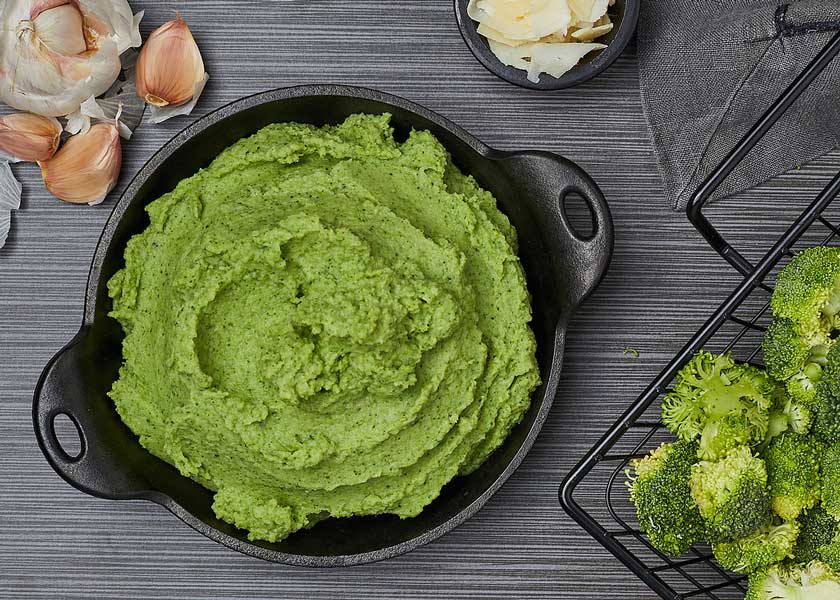
Ingredients
- 100 grams broccoli florets
- 30-45 ml baby’s regular milk or boiling water that has been cooled
Instructions
- Hands should be properly washed
- Broccoli florets should be washed and steamed for 8-10 minutes, or until tender
- Allow it to cool somewhat before adding 2-3 tablespoons of milk or water
- Blend until fully smooth in a food processor or with a hand blender, adding extra liquid as needed
Image credits: veggiesmadeeasy.com
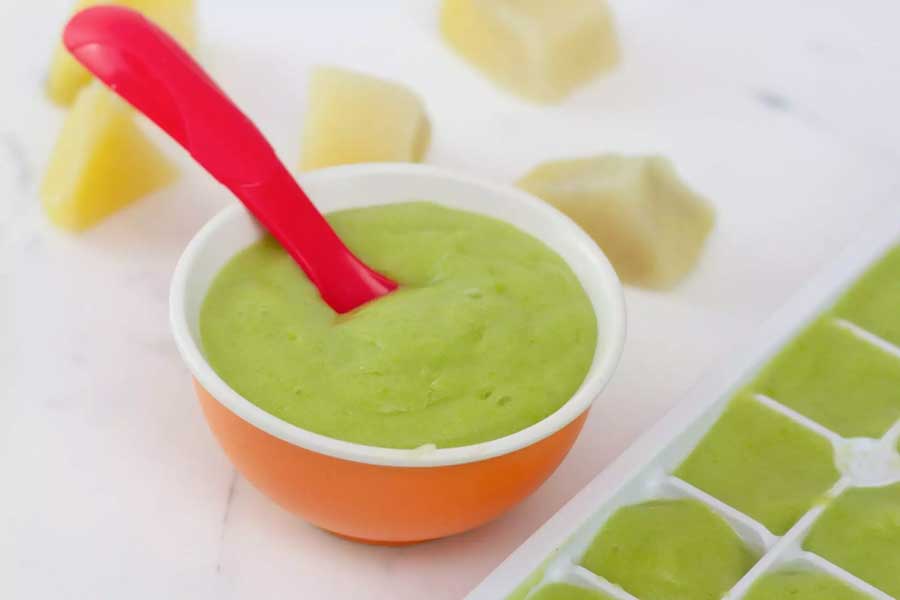
Ingredients
- 50 grams peas frozen
- 45 ml baby’s regular milk
Instructions
- Cook the peas for 2 minutes, or until they are tender. You can also microwave the peas in a closed container with a little quantity of water for 2 minutes (750 watts) or 1 1/2 minutes on maximum power (850 watts).
- Using a strainer, add 2-3 tablespoons of milk or water to the peas.
- Blend until fully smooth in a food processor. You can also go for a hand blender and add extra liquid if required.
Image credits: masandpas.com
2. Thicker purees
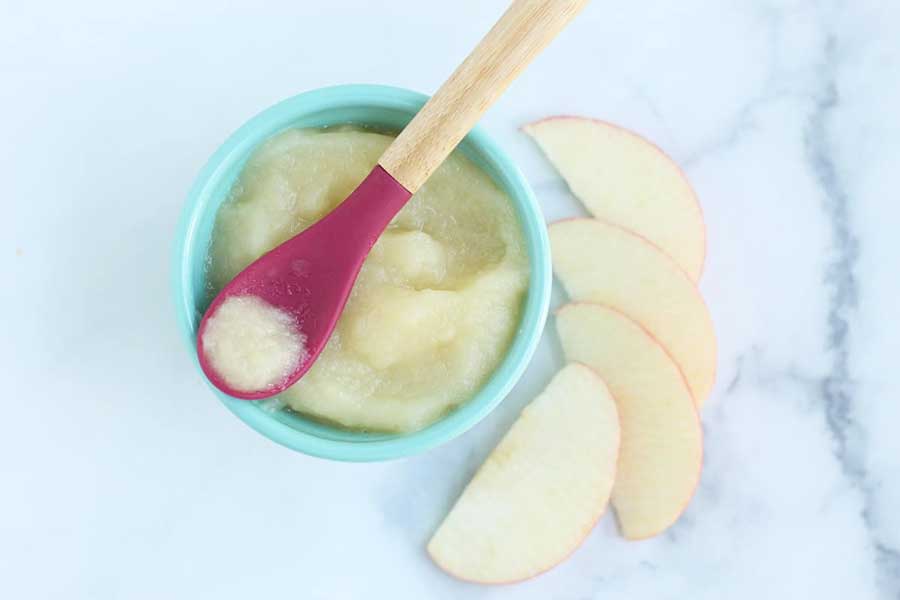
Ingredients
- 1 medium-sized apple It will be easier to cook soft apples instead of crisp ones
- 4 tbsp water
- 60-75 ml baby’s regular milk
- Cooled boiled water
Instructions
- The apple should be peeled, cored, and sliced into small pieces
- Cook it with 5 tbsp of water in a saucepan until bubbling and keep stirring. Cover the saucepan and reduce the heat level
- Cook for 10–15 minutes, stirring periodically
- Once soft, remove from gas and keep it to cool
- Add 4 to 5 tablespoons of the water or milk
- Proceed with blending it with either a food processor or a hand blender until the texture becomes smooth. Add extra liquid if required
Image credits: yummytoddlerfood.com
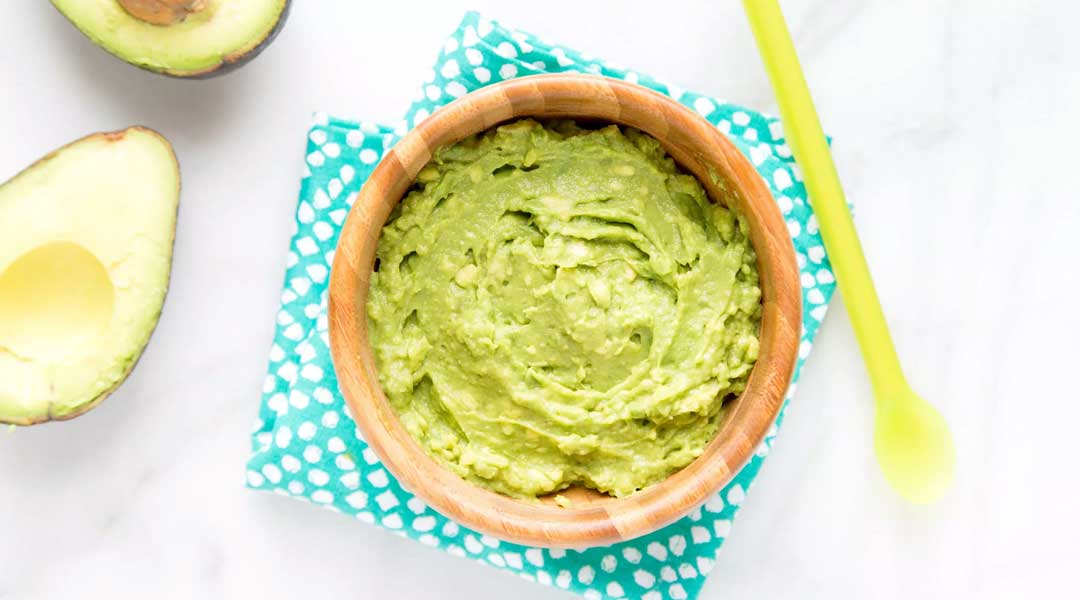
Ingredients
- 1 ripe avocado the narrow end should be somewhat mushy
Instructions
- Utilize a quarter of that avocado by removing its peel
- Slice the avocado
- Take a bowl and mash it with the help of a fork
- Feed it to your baby
Image credits: thebump.com
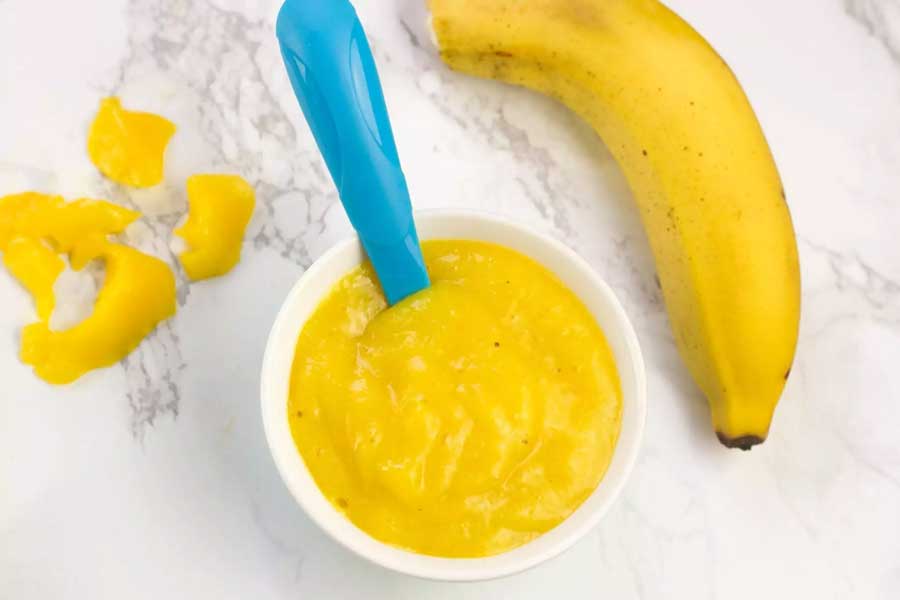
Ingredients
- Half Ripe banana
- 1 tablespoon of yogurt optional
Instructions
- Peel the banana properly
- Cut it in half
- Mash the banana slice with a fork in a bowl
Image credits: masandpas.com
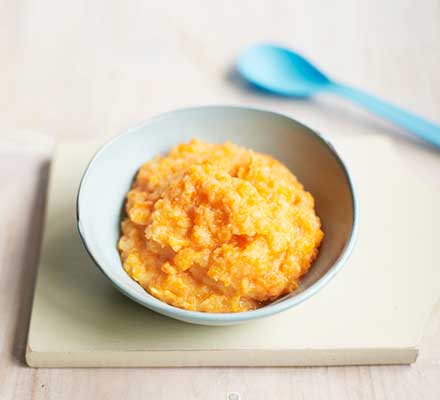
Ingredients
- 1/2 celeriac
- 3 medium carrots
- 2 apples
- A little bit of baby’s regular milk
Instructions
- Peel and cut the celeriac, carrots, and apples into chunks (200g each)
- Steam the celeriac, carrots, and apples for 15 minutes or until soft in a food steamer over simmering water
- Blend it with a food processor by adding a splash of milk. Blend until it forms a puree a smooth texture
- You might want to scrape the sides of the bowl/container while blending to obtain a smooth consistency
Image credits: BBC Good Food
3. Finger foods
Finger foods are basically tiny meals that your baby can easily pick up and consume. Once you begin with solids, the introduction of finger foods to your baby helps them to become acclimated to various food structures & baby weaning recipes, improves coordination, and encourages self-feeding. Two of the most widely used finger foods for 6 months old are
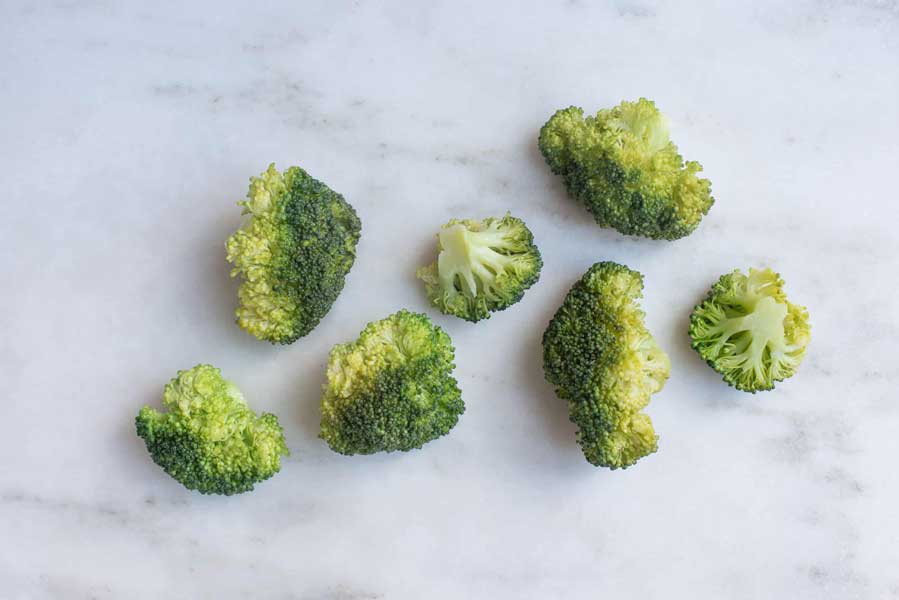
Ingredients
- 1 pound broccoli florets
- 2 tbsp olive oil
- 1/2 tsp salt optional
- fresh lemon juice optional
- grated parmesan or shredded cheese optional
- sesame seeds optional
Instructions
- Start with preheating the microwave up to a temperature of 400 degrees F
- Keep the broccoli floret on a rimmed baking sheet and coat it with some olive oil
- Mix it well until well-coated and the florets appear shiny
- Roast the coated florets for about 15-20 minutes or until they become soft
- Serve after it cools down a bit. You can also sprinkle salt or squeeze a bit of fresh lemon juice. Other options to sprinkle include grated parmesan or shredded cheese or even sesame seeds.
Image credits: Solid Starts

Ingredients
- A medium-sized carrot
Instructions
- Start by peeling the carrot
- Cut the peeled carrot into sticks (the pieces should be of the size of a chip)
- Cook the carrot sticks and steam them for about 8 to 10 minutes
- Put it off the gas, keep it aside to cool it down, and serve
Image credits: morganmanagesmommyhood.com
4. Fruits & Vegetables
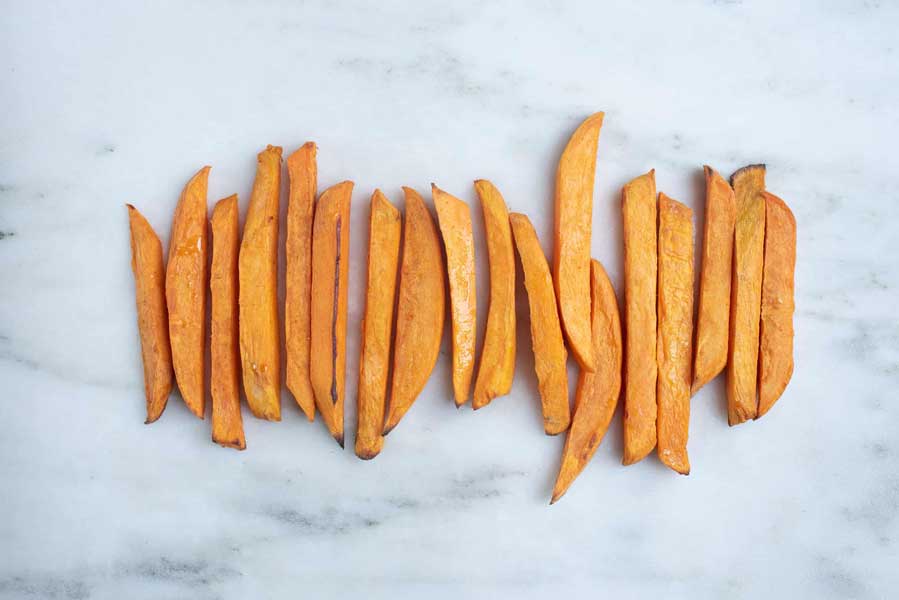
Ingredients
- 1 small sweet potato
- 1 tsp olive oil
Instructions
- Place a rimmed baking sheet along with a foil in the microwave
- Preheat the oven up to 400oC
- Wash the sweet potato properly underwater and cut it in half first
- Then continue cutting it lengthwise into strips
- Once again cut those strips in halves until they attain a thickness of half an inch
- Once again cut those strips in halves until they attain a thickness of half an inch
- Transfer everything into a bowl and add some olive oil to it
- Transfer everything into a bowl and add some olive oil to it
- Roast for about 23-25 mins until they become soft
- Let it cool down
- Serve it to your baby
Image credits: Solid Starts
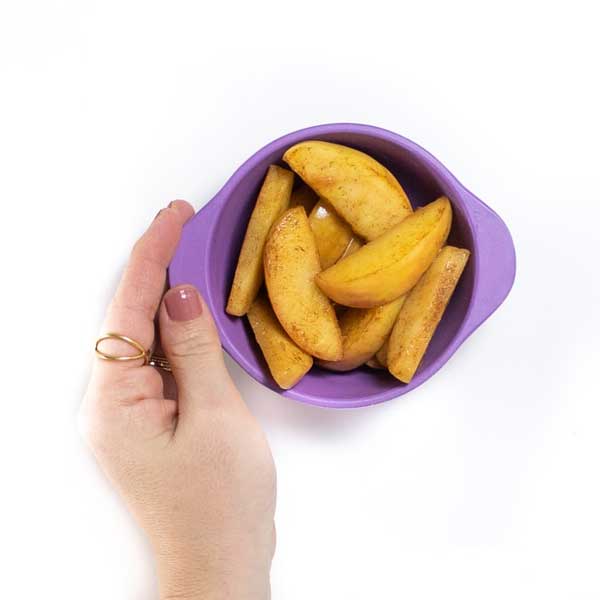
Ingredients
- 1 small apple
- 1 tsp neutral oil or butter
Instructions
- Preheat the oven up to 375 degree F
- Place a pie plate or baking dish in the microwave and coat it with either oil or butter
- Warm the oven to melt the butter/oil and then remove it from the oven
- Slice the apple into pieces of thickness half an inch
- Keep the apple slices on the baking dish and mix them well
- Add cinnamon according to your preference
- Bake the apples for about 30-35 minutes until they become soft (you can check with a fork by poking on them)
- Allow it to cool down
- Serve it to your baby
Image credits: Baby Foodie
Melon slices
The simplest way to feed watermelon to your baby is by cutting it into small rectangular pieces. The size of the watermelon slice should be around 2 adult fingers together. You can also cut the slice in the size of a card deck so that your baby could hold it with their hands.
Do not forget to remove the black seeds from the slices. However, you can leave the white seeds as it possesses no harm to the baby. Watermelons for babies are a great substitute for teethers and are considered excellent to build the abilities necessary to chew and swallow.
Mango slices
Take a fresh mango and wash it thoroughly under running water. Peel the mango and cut out some of the flesh from the pit. Give your baby the whole pit to suck/munch. You can also offer the mangoes by cutting them into slices (width = two adult fingers placed together).
One more technique is by mincing the mango pieces finely and then folding them into yogurt. Mangoes are full of Vitamins such as Vitamin A, B, C, B6 along with beta-carotene and folate. All of these nutrients help your baby to develop a strong immune system.
Baby Refusing to Eat – Tips for Reluctant Eaters
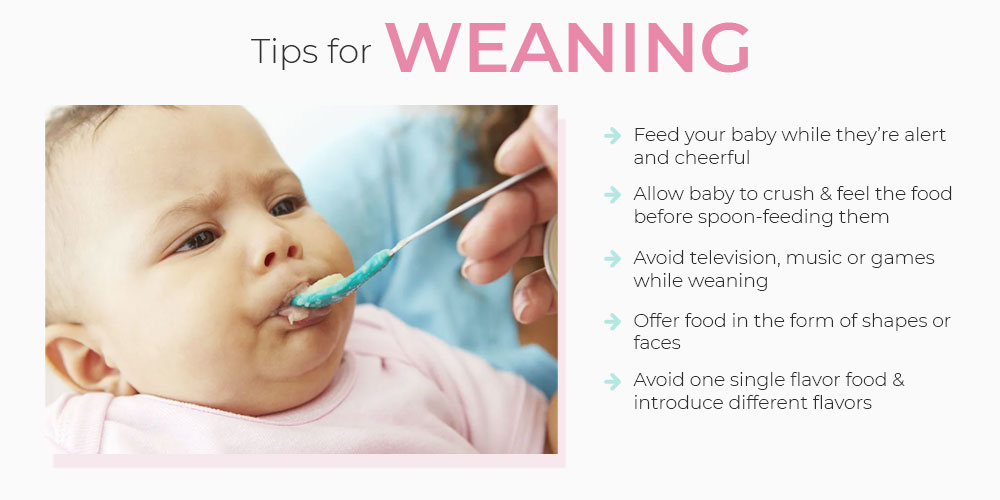
- Instead of giving them food when they’re sleepy, try providing the baby weaning recipes to them while they’re alert and cheerful. A nice time is usually in the middle of the morning.
- Put a glob of food on the table or their highchair tray to give them a taste of what’s to come. Allow them to crush it and examine it before spoon-feeding it to them.
- While trying out different weaning recipes, turn off the television, turn down the music, and get games and other distractions out of the way. A peaceful setting will aid your baby’s concentration on the work at hand.
- Feeding may be made more enjoyable by providing food in the form of shapes or faces on the plate.
- Try taking a bite and make ‘yummy’ noises so your kid realizes it’s a portion of delicious food and in turn, your baby will want to imitate you.
- At mealtimes, provide small quantities of a variety of flavors so that if they don’t like one, they may try something else.
- Smaller quantities are also less intimidating – you may always give them a little more if they truly like something new!
- Wait and try again the next day if your baby spits out the food. You can also mix it with some of their most liked food.
Our Advice
Learning to eat different weaning recipes is a major shift for your child. So, be ready to take it patiently and let them take the lead here. Let your baby set the pace. When eating and drinking, do not leave your child alone. In the beginning, it may seem as though their food travels all over except their mouth, but it gets better eventually.
When it comes to how long weaning takes, there are no hard and fast guidelines regarding this. Every infant is one of a kind and it is quite essential for you to follow their lead and pace.

Laura is a trained primary teacher who takes a profound liking in interacting with and bringing out the best in children. She is also an ISSA certified pediatrician with an extensive practice of over 12 years. Laura comprehends the needs of infants and now compresses her expertise into writing thorough parenting guides to aid new parents.

